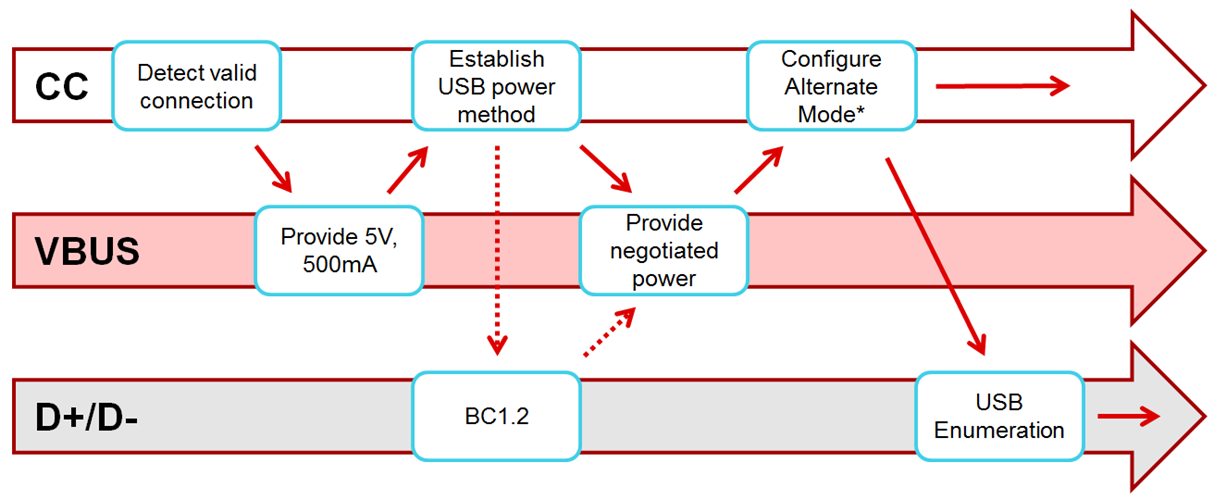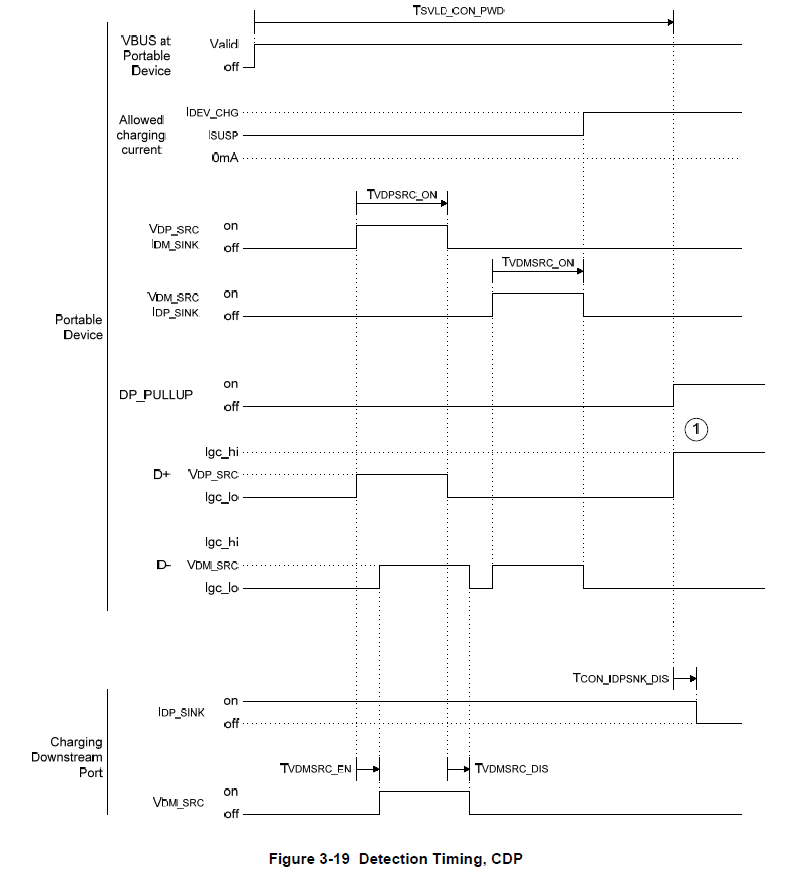Part Number: TPS65986
This question is broken down into 2 pieces, each of which causes some system challenges for us:
- Is there a way to improve USB detection to prevent TPS65986 from reporting SDP connected first, then a little bit later after completing BC1.2 detection, update that report to CDP/DCP? This change in connected device reporting can cause our system to temporarily drop Host connection, and the initial SDP reporting can also cause problems with system booting due to the associated current-limit setting for SDP.
- We have been told that 1-second should be sufficient for TPS65986 BC1.2 detection.... this is a pretty simple detection specification, can this be reduced somehow, with FW update perhaps?




